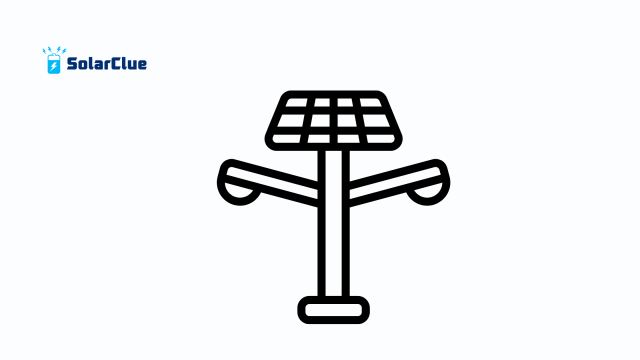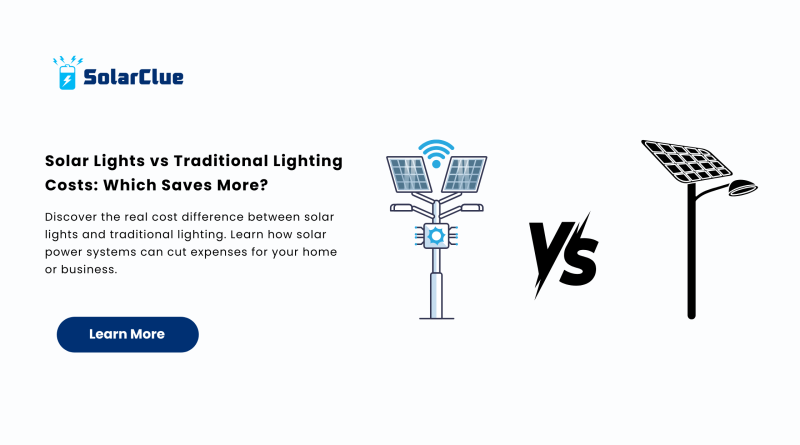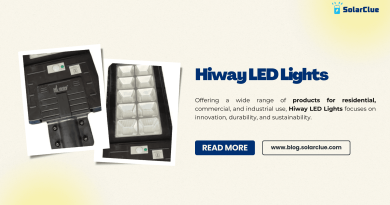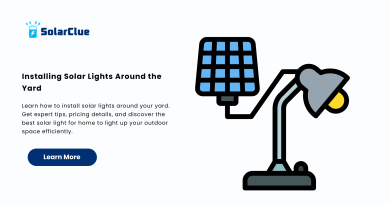Solar Lights vs Traditional Lighting Costs: Which Saves More?
Lighting is an essential part of any home, office, or public space. But as energy prices rise and environmental concerns mount, many are turning to solar lights as a cost-effective, eco-friendly alternative to traditional lighting. In this guide, we’ll explore the true cost comparison between Solar Lights vs Traditional Lighting Costs options to help you make a smart decision.
Table of Contents
- 1 What Are Solar Lights?
- 2 Understanding Traditional Lighting
- 3 Solar Light Cost vs Traditional Lighting Cost
- 4 Environmental Impact Comparison
- 5 Lifespan and Durability
- 6 Ideal Use Cases for Solar Light for Home
- 7 Performance During Power Cuts
- 8 Aesthetics and Design Flexibility
- 9 ROI: Return on Investment
- 10 Government Incentives & Subsidies
- 11 Is Solar Lighting Worth It?
- 12 What Users Are Saying
- 13 Making the Transition
- 14 Choosing the Right Solar Lighting Product
- 15 Final Thoughts
- 16 FAQs
What Are Solar Lights?
Solar lights are self-contained lighting systems powered by the sun. They consist of solar panels, rechargeable batteries, and LED bulbs. During the day, they absorb sunlight, convert it into solar power, and store it for nighttime use.
Components of a Solar Light System
- Solar panel: Captures sunlight and converts it to electricity
- Battery: Stores the generated electricity for later use
- LED light: Provides efficient and bright illumination
- Controller: Manages energy flow and battery health
Understanding Traditional Lighting
Traditional lighting systems rely on grid electricity. This includes incandescent, CFL, or standard LED bulbs powered by electricity from coal, hydro, or gas sources.
Types of Traditional Lighting
- Incandescent bulbs: Cheap but inefficient and short-lived
- CFL bulbs: More efficient but contain mercury
- LED bulbs: Efficient and long-lasting but dependent on the electric grid
Solar Light Cost vs Traditional Lighting Cost
One of the biggest factors driving people to switch to solar lights is cost. Let’s break down the costs:
Initial Investment
- Solar light for home: ₹500 to ₹3,000 per unit depending on size and quality
- Traditional lighting: ₹100 to ₹500 per bulb, but requires electrical wiring and installation
Installation Costs
- Solar lights: Usually DIY and wireless; low or no professional installation cost
- Traditional lights: Electrician fees, wiring, switches; higher upfront cost
Operating Costs
- Solar power system: Zero electricity bills
- Traditional lights: Monthly electricity cost depending on usage and rates
Maintenance Costs
- Solar lights: Minimal maintenance, occasional battery replacement
- Traditional lights: Frequent bulb replacement and wiring repairs
Environmental Impact Comparison
Choosing solar power helps reduce carbon emissions and reliance on fossil fuels.
Solar Lighting Benefits
- Zero emissions
- Renewable energy source
- Lower carbon footprint
Traditional Lighting Drawbacks
- Contributes to greenhouse gas emissions
- Non-renewable energy dependency
- Higher energy consumption
Lifespan and Durability
- Solar lights: Average lifespan of 5–7 years, LED lasts up to 25,000 hours
- Traditional bulbs: Incandescent lasts ~1,000 hours, CFL ~8,000, LED ~15,000
Ideal Use Cases for Solar Light for Home

Solar lights are perfect for:
- Garden and pathway lighting
- Security lights
- Balcony or rooftop lighting
- Remote or off-grid locations
Performance During Power Cuts
Solar lighting works independently of the grid, making it reliable during outages. Traditional lighting, unless backed by an inverter, stops functioning when the power is out.
Aesthetics and Design Flexibility
Solar lights come in sleek, modern designs and are often portable. Traditional lights are more rigid due to wiring needs.
ROI: Return on Investment
Though solar lights may cost more upfront, they pay for themselves through savings on electricity and maintenance.
Break-even Point
Most solar light for home setups recoup investment within 2–3 years.
Government Incentives & Subsidies
In India, schemes often support solar power system installations. These reduce the cost of adopting solar technology.
Is Solar Lighting Worth It?
If you value long-term savings, environmental benefits, and independence from the grid, then yes—solar lighting is absolutely worth it.
What Users Are Saying
According to users at solarclue.com, “Switching to solar light for home helped us cut down our energy bills by 40%.” Another user shared on blog.solarclue.com, “We no longer worry about power cuts affecting our outdoor lighting.”
Making the Transition
Start small with solar garden lights, then expand to solar power systems for more significant areas. Use hybrid setups during the transition.
Choosing the Right Solar Lighting Product
When selecting, consider:
- Battery capacity
- Lumens (brightness)
- Weather resistance (IP rating)
- Warranty and brand reputation
Final Thoughts
Switching from traditional lighting to solar lighting can lead to massive cost savings, greater energy independence, and a lighter environmental footprint. With dropping solar light cost, improved battery efficiency, and increased government support, there’s never been a better time to make the switch.
So why wait? Start exploring a range of options today at solarclue.com and read more guides at blog.solarclue.com to brighten your future with solar power.
FAQs
1. Do solar lights work in cloudy weather?
Yes, though performance may drop. Modern solar power systems store enough energy for 1–2 days.
2. Can I install solar lights myself?
Absolutely! Most solar lights are DIY-friendly with no wiring needed.
3. Are solar lights good for security purposes?
Yes, many solar lights come with motion sensors perfect for security.
4. What is the average lifespan of a solar light?
5–7 years on average, with LED lights lasting up to 25,000 hours.
5. How can I maximize solar light efficiency?
Place them in areas with maximum sun exposure and keep the panels clean.
To discover more ways to save with solar, head over to solarclue.com and dive into valuable insights at blog.solarclue.com—your journey to sustainable living begins here!




